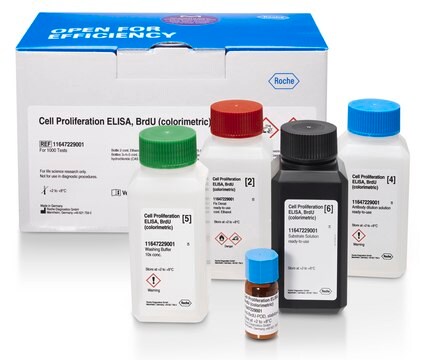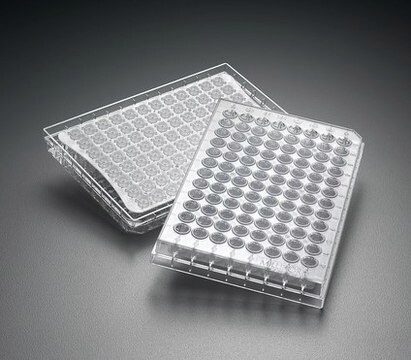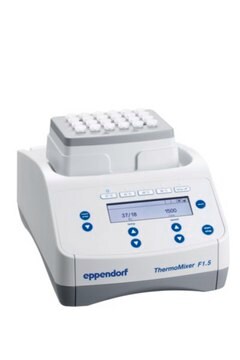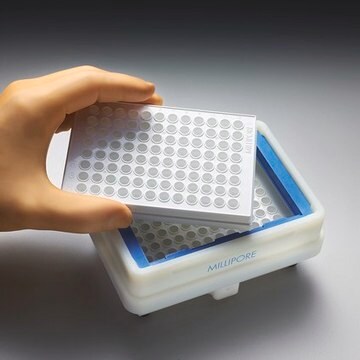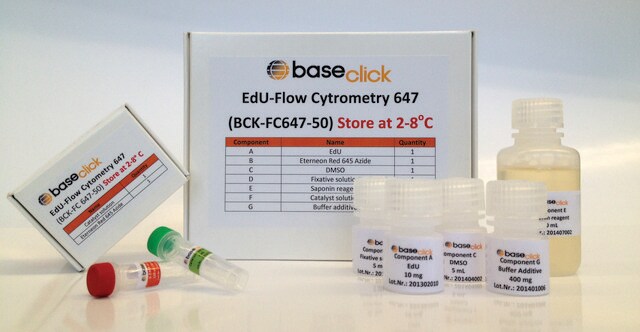11669915001
Roche
Cell Proliferation ELISA, BrdU (chemiluminescent)
Synonym(s):
BrdU, cell proliferation
About This Item
Recommended Products
usage
sufficient for ≤1,000 tests
Quality Level
manufacturer/tradename
Roche
technique(s)
ELISA: suitable
detection method
chemiluminescent
shipped in
wet ice
storage temp.
2-8°C
Related Categories
General description
Specificity
Application
- for bromodeoxyuridine (BrdU) proliferation assay in ReN and primary astrocytes
- to test the effect on imatinib on the proliferation of neuroblastoma cells using BrdU incorporation assay
- to check the effect of palbociclib on cell cycle inhibition using BrdU incorporation in pancreatic patient-derived primary cell lines
- Detection and quantification of cell proliferation induced by growth factors and cytokines
- Determination of the inhibitory or stimulatory effects of various compounds on cell proliferation in environmental and biomedical research, and in the food, cosmetic, and pharmaceutical industries
- Measurement of the immunoreactivity of lymphocytes, stimulated by mitogens or antigens
- Analysis of the chemosensitivity of tumor cells to different cytostatic drugs in medical research
Packaging
Components
- BrdU Labeling Reagent, 1,000x conc
- FixDenat
- Anti-BrdU-POD 4. Antibody Dilution Solution
- Washing Buffer PBS, 10x conc.
- Substrate Component A
- Substrate Component B
Other Notes
Kit Components Only
- BrdU Labeling Reagent
- FixDenat ready-to-use
- Anti-BrdU-peroxidase antibody
- Antibody Dilution Solution ready-to-use
- ready-to-use 10x concentrated
- Substrate Component A
- Substrate Component B
Signal Word
Danger
Hazard Statements
Precautionary Statements
Hazard Classifications
Eye Irrit. 2 - Flam. Liq. 2 - Muta. 1B - Skin Sens. 1
Storage Class Code
3 - Flammable liquids
WGK
WGK 1
Choose from one of the most recent versions:
Already Own This Product?
Find documentation for the products that you have recently purchased in the Document Library.
Customers Also Viewed
Articles
The NTP transporter allows dUTPs to enter live cells and is an alternative to BrdU/EdU cell proliferation assays used to measure cell cycle dynamics in real-time.
Cell based assays for cell proliferation (BrdU, MTT, WST1), cell viability and cytotoxicity experiments for applications in cancer, neuroscience and stem cell research.
Our team of scientists has experience in all areas of research including Life Science, Material Science, Chemical Synthesis, Chromatography, Analytical and many others.
Contact Technical Service